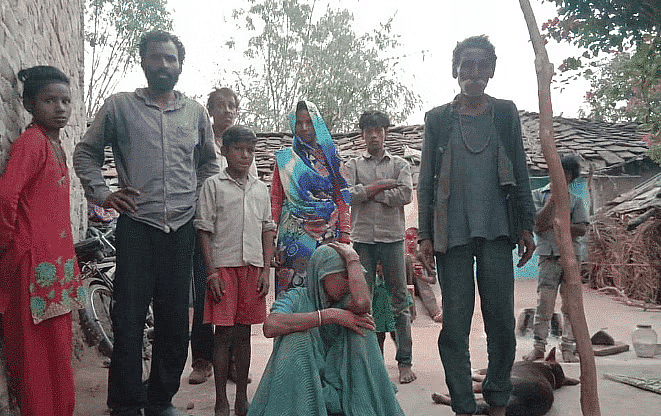Worksheet: A Snake Charmer’s Story - 2 | EVS Class 5 PDF Download
 Q1: Match the following
Q1: Match the following
Q2: Fill in the Blanks
(i) Aryanath’s family is known as Kalbeliyas and they are saperas, which means they are skilled at catching and handling _________ (snakes, crocodiles).
(ii) Aryanath’s grandfather, Roshan Nathji, was famous among their people for his ability to catch many _______ (poisonous, healthy) snakes.
(iii) Aryanath’s family members used to travel from village to village carrying their snakes in _________ (plastic, bamboo) baskets, and they would perform shows for people and sell medicines made from plants collected from the forests.
(iv) Aryanath’s ________(mother, father) taught him how to remove the poisonous fangs and close the tube of poison in a snake’s mouth.
(v) With the new law against catching and keeping _____(wild, pet) animals, Aryanath and his cousins can form a been party to entertain people and share their knowledge about snakes with children in towns and cities.
Q3: Unscramble the words
(i) NSEKA
(ii) AFREMR
(iii) EENB
(iv) HOLD
(v) INOSOP
Q4: Multiple Choice Questions
(i) What is the name of the narrator in “A Snake Charmer’s Story”?
(a) Roshan Nathji
(b) Aryanath
(c) Pankaj Gorana
(d) Mani Babbar

(ii) What kind of medicines did the snake charmers make from plants collected from forests?
(a) Medicines for heart diseases
(b) Medicines for diabetes
(c) Medicines for snake bites
(d) Medicines for headaches
(iii) What did the father of the narrator teach him when he grew older?
(a) How to play the been
(b) How to remove the snake’s skin
(c) How to remove the snake’s poisonous teeth (fangs)
(d) How to cook snake meat
(iv) What kind of movements does the Kalbelia dance have?
(a) Movements similar to the dance of the snake
(b) Movements are similar to the dance of the peacock
(c) Movements were similar to the dance of the elephant
(d) Movements similar to the dance of the monkey
(v) What is the purpose of sharing knowledge about snakes with children who live in towns and cities?
(a) To scare them of snakes
(b) To help them recognize poisonous snakes
(c) To encourage them to keep snakes as pets
(d) To teach them how to catch snakes
 |
Download the notes
Worksheet: A Snake Charmer’s Story - 2
|
Download as PDF |
Q5: Answer the following questions
(i) How did Roshan Nathji and his family earn their livelihood as snake charmers?
(ii) What did Roshan Nathji’s father teach him about snakes?
(iii) What is the Kalbelia dance?
(iv) How do the Kalbeliya people use their knowledge of snakes to help others?
(v) How can people distinguish between poisonous and non-poisonous snakes?
(vi) How did Roshan Nathji help people who were bitten by snakes?
(vii) Why is it difficult to continue the tradition of snake charming?
(viii) What is the significance of snakes in the Kalbeliya culture?
(ix) What are some of the musical instruments used in a been party?
(x) Why are snakes important to farmers?
The solutions of the worksheet "A Snake Charmer’s Story - 2"
|
38 videos|242 docs|41 tests
|
FAQs on Worksheet: A Snake Charmer’s Story - 2 - EVS Class 5
| 1. What is the role of a snake charmer in traditional culture? |  |
| 2. How do snake charmers handle snakes safely? |  |
| 3. Are snake charming practices common in all countries? |  |
| 4. What types of snakes do snake charmers usually work with? |  |
| 5. Why is snake charming declining in modern times? |  |





















